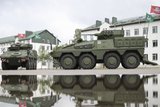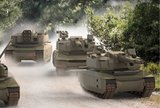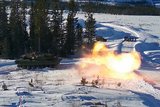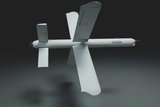The US Army has detailed the improved target acquisition capabilities two new systems will bring dismounted soldiers as they are introduced over the coming 18 months. The systems will allow soldiers to see targets in darkness, through fog and smoke.
The army expects to deploy the Enhanced Night Vision Goggle III (ENVG III) in the second quarter of 2018 and the Family of Weapons Sights-Individual (FWS-I) technology in the first quarter of 2019.
The FWS-I, mounted on a soldier's weapon, will wirelessly transmit its sight picture to the ENVG III, which is mounted on a soldier’s helmet. The ENVG will combine thermal imaging with more common night vision image intensification technology.
A variety of modes will allow soldiers to see in their goggles only the image from the ENVG III itself, only the image from the FWS-I, or a combination of the two. Using a 'picture-in-picture' mode, the image from the FWS-I is displayed at the bottom right of the image that is coming from the goggle.
Another mode is possible when the FWS-I on the rifle and the ENVG III on the soldier's helmet are both pointed in the same direction and seeing essentially the same thing; in this mode the image from the FWS-I can project a reticle into the goggle. The soldier can see the full image of what his goggle normally sees, but a circle representing the reticle from the FWS-I is overlaid onto that image, letting the soldier know where his rifle is pointed. This allows the soldier to acquire a target without needing to shoulder his weapon, while also allowing him to acquire a target while maintaining situational awareness of what else is going on around him.
The FWS-I is designed for the M4 and M16 rifles, and can mount on those rifles in front of day sights that have already been bore-sighted. The FWS-I will also work with the M249 Squad Automatic Weapon, the M141 Bunker Defeat Munition, and the M136 AT4 Light Anti-Tank Weapon.
Both the FWS-I and the ENVG III are currently in low-rate initial production. The army hopes to buy 36,000 of the FWS-I, and about 64,000 of the ENVG III. A crew-served variant and a sniper variant are also under development.
M4/M4A1
M16A4
M141 BDM
























